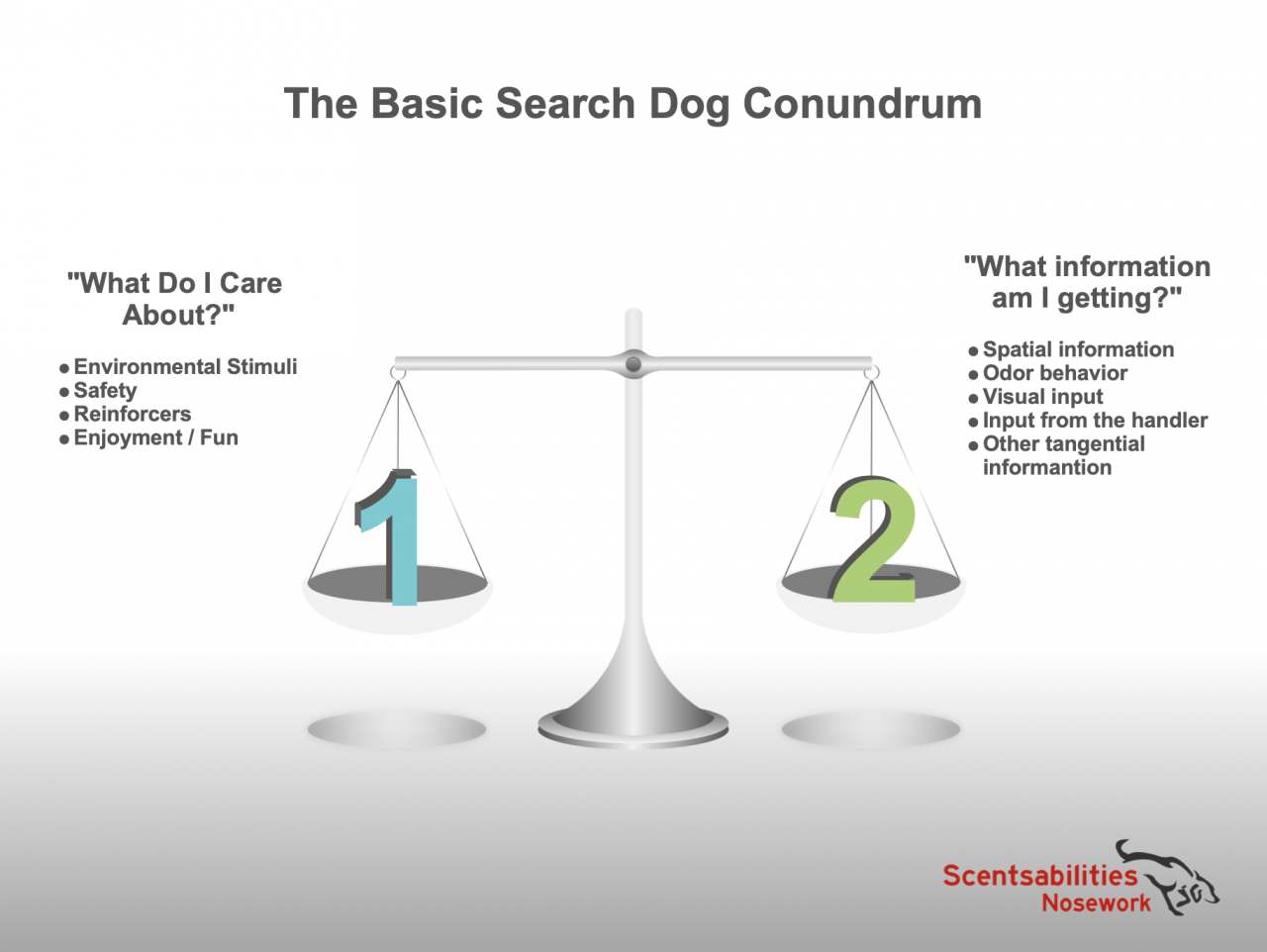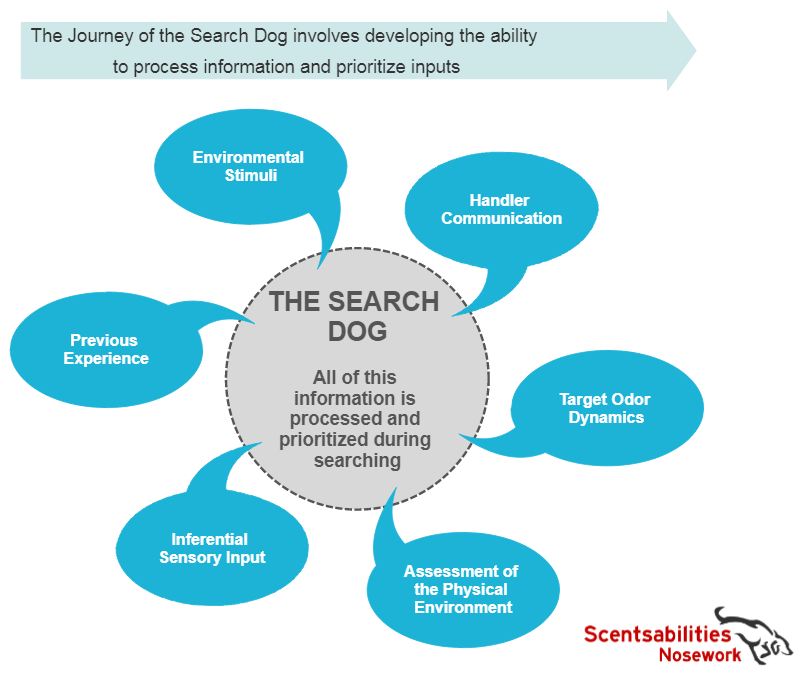Do you want a more efficient search dog?
Sure! Who wouldn't want their dog to find all the hides more accurately and in a faster time? The big question is…. CAN YOU help your dog to be more efficient? After all, doesn't it just depend on the dog finding the scent cone and following Birch back to the hide?
That was a little tongue in cheek!
Actually, you CAN help your dog to become a more efficient and effective searcher. The key is in creating a BALANCE between the dog's desires and the inputs that they are receiving.
The search dog lives in a constant state of conundrum. Does he chase a squirrel or smell girl-dog pee or does he go out and seek a scented Qtip? The answer depends on what pays off both with reward and intrinsic value.
The act of searching is fun for the dog. It's kind of like sitting down to a (doable) jigsaw puzzle and finishing it while sipping on a hot cocoa. I don't know about you, but a 1,000-piece puzzle is pretty daunting to me. I am liable to look for a few edge pieces and then give up when I can't get any to connect. I'm more of a 200-piece puzzler. That is more my speed. So not only do we need appropriate puzzles for our dogs, but we have to help them work through their priorities.
The Basic Search Dog Conundrum: Creating A Balance
To help a dog become more efficient, we have to work on this balance. If a dog shifts his focus to environmental stimuli, the need to feel safe, or something else rewarding to the dog, he can't find a hide very quickly or effectively. So that goes to say that we need to ensure that the dog is environmentally comfortable and that odor has value, in order to have an efficient search.
But it doesn't end there!
When a dog is focused on searching, he is bombarded with important information. That birch hide is really a needle in a haystack of a mountain of information. When we start this sport, we often picture an almost robotic response to odor where the only thing that matters is the scent of essential oil as it draws the dog to the hide. This really is nowhere near reality!
In reality, the dog is constantly assessing, thinking and processing information either directly related to the hide, the search area, or the handler.
Just like I'm most comfortable with a 200-piece jigsaw puzzle, dogs are going to have a comfortable skill level. They are going to be most efficient at their current skill level. Their comfortable level will depend on how well they balance the inputs. When the inputs are balanced, the dog is efficient. It's really just as simple as that!
The Search Dog: Balancing Your Inputs
Let's talk briefly about each input:
Environmental Stimuli - The dog needs to be able to discern the difference between target odor and competing odors. You can also have other distractions in the area, not related to scent. The other day Brava performed a search in a barn. She saw the barn cat, ignored it, and continued to search…. Also while baby goats were making noise in the vicinity. She had to CHOOSE odor over the barn cat and the goats.
Handler Communication - Just like the dog is communicating 100% of the time, so are you! The dog pays attention to your body language, which at times might conflict with what odor is telling him. Incidentally, that's how we talk a dog into an alert!
Target Odor Dynamics - When odor dissipates into an area, it's not a straight-line. There is no connect-the-dots, nor is there a tractor beam. The dog has to understand and respond to odor concentration that is dynamic and constantly changing and shifting. The fact that they can determine directionality and "source" is pretty amazing in an of itself!
Assessment of the Physical Environment - Not only does odor go around things, but it often go through open structures, collects in some areas, and goes underneath raised objects. The dog has to visually assess the environment and make appropriate inferences and deductions.
Inferential Sensory Input - There is a phenomenon at trials that often occurs when a dog false alerts away from a hide. They leave pheromones and other information behind. Typically it's quite common that this will trigger a string of false alerts in dogs following. That's because dogs will use all of the information available to them when sourcing hides. That includes the smell of previous dogs! Have you ever seen a dog track a hide setter when looking for a hide? It happens!!
Previous Experience - Dogs build skills by learning from past experiences. They can draw conclusions, recognize patterns, understand contextual information, and learn from mistakes. The history of the dog's search experience is carried with them every single time that they search. Ideally, they are building on all positive history!
So every time you ask your dog to search, your dog is processing ALL of this information! That's pretty amazing! We will find that if we push the dog too far in one aspect or create a historical trend in the dog, that we can either help the dog to search in balance or we can create an imbalance in the dog's search preferences.
The key to an efficient search dog is to help them with this balance!
Click here to learn more about this breakthrough course!
By accepting you will be accessing a service provided by a third-party external to https://www.fenzidogsportsacademy.com/

